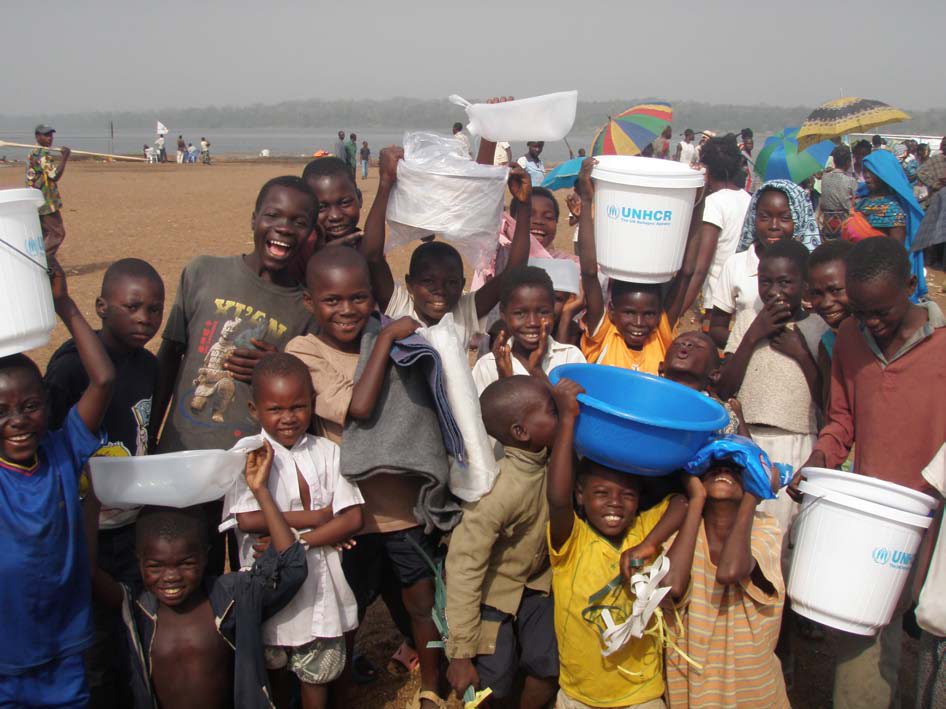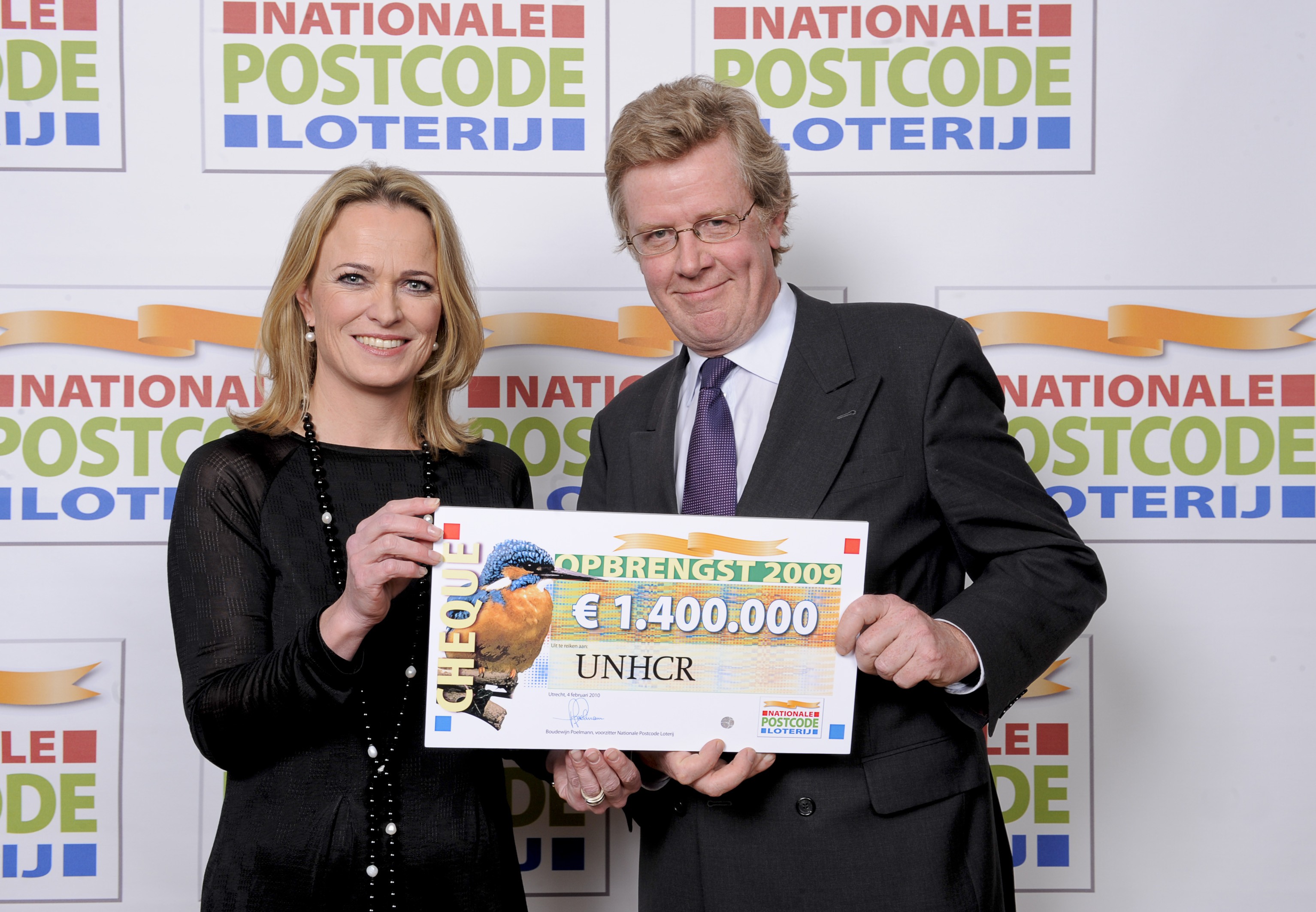50 years on in Germany, Eastern Europe's displaced still remember UNHCR
50 years on in Germany, Eastern Europe's displaced still remember UNHCR

BERLIN, Germany, January 5 (UNHCR) - Olga* still remembers that day in Germany nearly half a century ago when after 14 years she finally left the refugee camp near the northern port city of Hamburg. "It was wonderful!" the 84-year-old lady said. "Finally, we could have a normal life again." She, her husband and child moved from a shared single room in old barracks used to house Polish forced labourers during the war, into a small two-bedroom flat in Hamburg built with support from UNHCR in one of its first programmes. Olga has lived there ever since.
Olga and her family, originally from Estonia, were considered "Displaced Persons", and were one of the first refugee groups who came under UNHCR's mandate after the organization started its work in 1951 to help European refugees uprooted by the war.
The term 'Displaced Persons' was applied to millions of people who found themselves outside the borders of their countries as a result of World War II. Most were former slave labourers or those who had been imprisoned in concentration camps. Some 11.3 million people had been taken to Germany by the Nazis during the war as slave labourers - the majority from Eastern Europe.
Even though most of the displaced had been able to return home after the end of the war, some stayed in West Germany and in other European countries fearing repression and persecution in the areas under control of the Soviet Union. Olga Hermann and her family decided not to return to Estonia. Some of her relatives had already been deported to Siberia and any return would have been life-threatening.
For years, the displaced were housed in refugee camps in West Germany, the last of which were closed only in the beginning of the 1960s. They frequently lived in old military barracks and former camps for forced labourers and prisoners of war, which were already in poor condition. In the first few years there was a high risk of catching diseases such as tuberculosis in the camps.
When countries such as the USA, Canada and Australia started admitting people for resettlement, hundreds of thousands emigrated. But not everybody had the opportunity. Those left behind in the camps - the old, the sick, but also many families with children - suffered from a grim outlook for the future.
"In the camp, there were many seriously disabled people. There were all those who did not want to emigrate or were sick," Olga remembers. "We also wanted to leave Germany but it was impossible. My husband had problems with his lungs, and we were not accepted."
In September 1951, when UNHCR opened its first branch office in Bonn, there were 245,000 non-German refugees in Western Germany, with 56,000 living in 143 camps administered by the authorities of the newly-founded Federal Republic of Germany. In neighbouring Austria, some 50,000 people remained in camps.
Initially, UNHCR lacked funds for a large-scale assistance programme for the displaced people. In 1952, the first U.N. High Commissioner for Refugees, Gerrit Jan van Heuven Goedhart, called on member states of the United Nations for more international support.
"I cannot stress too strongly the need for international action to bring to an end the misery which exists amongst the people who have been condemned to live in camps in Central Europe for the last six or seven years," he told the United Nations Economic and Social Council.
Two years later, four out of five refugees in Germany and Austria were still in camps. When presenting the Nobel Peace Prize to UNHCR in 1954, Nobel Prize Committee chairman Gunnar Jahn stressed the pressing need for the local integration of refugees. "To be sure, the refugees get enough food to keep them alive," he said. "But, what else? Dreary hopelessness day after day, bad accommodation, worse than bad clothing and sanitation. Nothing to do but to sit there and wait and wait. For what? For something they no longer have any hope of realizing. Of what use is it to take a few children on a summer holiday in some country, only to send them back again to their camps?"
From 1955, UNHCR had the funds to provide housing and education to the most vulnerable of these refugees. Simple brick houses were built throughout Austria and the Federal Republic of Germany, and refugees received financial support to buy household items. Young refugees benefited from vocational training which enabled them to find employment. Together with non-governmental agencies, UNHCR provided counselling to those in the camps. Counsellors helped refugees find jobs and accommodation outside the camps.
All this was possible thanks to the United Nations Refugee Fund (UNREF) - a special fund to which 21 countries contributed, and which was later complemented by funds from UNHCR's budget. Although large parts of UNREF funds were used for Germany and Austria, it covered also some assistance in other countries hosting refugees, such as Italy and Greece.
When West Germany's last camps for "Displaced Persons" were closed in the early 1960s, 19,336 people had received assistance from UNHCR and 3,325 flats had been built with the agency's financial support.
Some of the flats are still inhabited by the first generation of "Displaced Persons", such as Olga.
"We found work here, our son could go to school here," Olga remembers. Integration was successful, and the children and grandchildren of the displaced people generally became Germans.
* Name changed
By Andreas Kirchhof in Berlin, Germany








